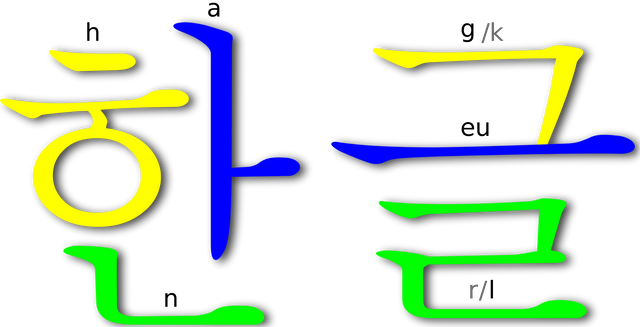Learn How To Read And Write Using Hangul (Korean Alphabet): Lesson 3

Hi and welcome to Lesson 3 of 'Learn How To Read And Write Using Hangeul.' It has been quite some time since the last lesson and I apologise. I have been a little preoccupied.
In Lesson 1 we learned about the history of Hangeul, and in Lesson 2 we studied how the alphabet works exactly. In Lesson 3 we will start to look at the actual characters, and the vowels to be more specific.
ㅏ
The first one we will take a look at is ‘ㅏ.’ This character is the equivalent of the letter ‘A’ in English. Be careful with the pronunciation, though. As English speakers we tend to say ‘A’ as ‘Aye.’ This is not the case in Korean. The sound you want to be making is ‘Ah.’
ㅑ
As you can see, the above character looks similar to ‘ㅏ’ but has one extra little horizontal line. By adding this line, all we have done is add a ‘Y’ to the front, changing the sound from ‘A’ to ‘Ya.’ You will enunciate it the same way you would enunciate ‘Yahoo.’
ㅓ
This character is similar to the sound you make when you say the first syllable in ‘_awe_some.’ Translated into English, the character is usually represented by ‘U’ or ‘Eo.’
ㅕ
As before, the second horizontal lines just represents a ‘Y’ being added to the front. Hence ‘ㅓ’ will be written as ‘U’ or ‘Eo’ and ‘ㅕ’ will be written as ‘Yu’ or ‘Yeo.’
ㅗ
This is the Hangeul equivalent to our ‘O.’ Much like ‘ㅏ’, English speakers need to be careful with their enunciation. You do not want to be making an ‘O’ sound as in ‘owe.’ Think more of the sound monkeys make ;)
ㅛ
Again, by adding the second line, you are just adding a ‘Y’ to the front. Hence ‘ㅛ’ would be written as ‘Yo.’
ㅜ
This character is Hangeul’s version of ‘Oo’ or ‘U’ as in ‘moon’ or ‘flu.’
ㅠ
Again this character just has a ‘Y’ in front of it. Hence ‘ㅠ’ will be written as ‘Yoo’ or ‘Yu.’
ㅣ
This would be the Korean equivalent of ‘E’ as in ‘Eat’ or ‘people.’
ㅡ
This character represents the sound the letter ‘I’, for instance, makes in words such as ‘gin’ or ‘bin.’ The flat line represents the shape of your mouth when you make the sound. It is usually translated into English as ‘Eu’ but can also sometimes be simply written as 'U.'
With the last two characters, you would have noticed that there were no ‘Y’ options as with the ones before. Hence it is impossible to write a word like ‘Yin’ using the Korean alphabet. Hangeul’s simplicity is both its strength and weakness.
That’s all for today. In the next lesson, we will look at double vowels.
See you soon. Or at least I will do my best ;)
Click below to follow me:
